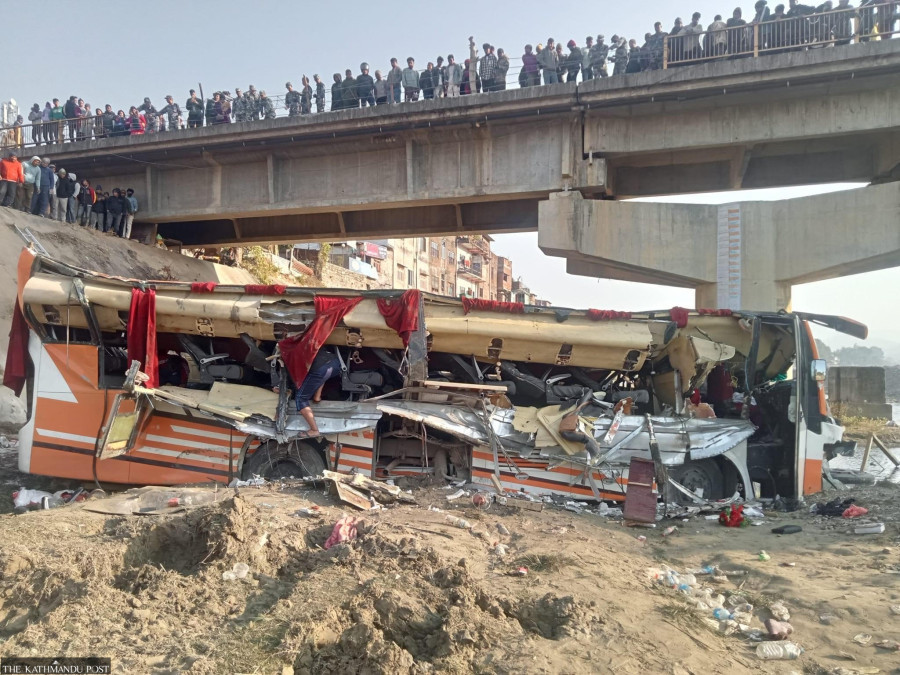Editorial
Nepal’s unsafe roads
A death here or there seldom gets the public attention or that of the authorities.
Road accidents this past weekend claimed the lives of 20 people across the country. At least 12 people died in a bus accident on Friday night in Dang, while on Saturday five perished in a car crash at Chandragiri and two were killed in another road accident in Baglung. Separately, a pedestrian was killed in a hit-and-run in Syangja on Monday. Road transport, it appears, is getting riskier day by day in Nepal. But there have been few if any effective initiatives to cut down on the number of fatal incidents on our roads.
Road transport safety has not gotten the urgency it deserves. Following accidents, official initiatives are often limited to expressing condolence for the bereaved families, discussing the tragic incidents for a few days and at the most forming a probe panel in the case of comparably bigger accidents. On Sunday as well, the Ministry of Physical Infrastructure and Transport formed a five-member panel to find the root causes of fatal road incidents. If only the recommendations of such panels would be implemented!
In Nepal’s case, the causes of accidents are obvious enough. Road transport safety basically involves three things: road, vehicle and driver. There are lapses on all three fronts. Tracks are being opened haphazardly across the country without adhering to even basic engineering. The narrow roads are built with hairpin turns in difficult terrains. To add to the danger, old and dilapidated vehicles ply such perilous roads. Likewise, reckless driving along the dirt roads has been a serious problem for years.
Several national as well as international reports have repeatedly highlighted these problems. The Nepal Demographic and Health Survey-2022 carried out by the Ministry of Health and Population between January 5 and June 22 the same year stated that on average, 14 of every 100,000 people in Nepal die in road accidents. Likewise, the Nepal Road Safety Action Plan (2013-2020) has identified safety issues on Nepal’s roads. Among the problems it highlights are blind road corners, poor shoulders, unforgiving side-drains, inadequate safety barriers at steep vertical drops, and lack of climbing lanes.
Now with almost all districts and municipalities connected to national road networks, the priority should be on addressing these issues and upgrading existing structures rather than adding more miles of asphalt, especially in difficult terrains. Again, the most effective safety measures are also often the most obvious ones. Experts say many lives can be saved just by building road safety barriers in certain road sections. The reason road safety is so neglected is that a death here or there seldom gets the public attention or that of the authorities. Yet it is a serious issue and of great public concern. Year after year, road accidents continue to be ranked among the top 10 causes of mortality in Nepal. This represents a breathtaking lapse on the part of the state and its relevant agencies. If it cannot even guarantee good roads and effectively enforce traffic rules, people will struggle to believe it is capable of much else.




 9.12°C Kathmandu
9.12°C Kathmandu












%20(1).jpg&w=300&height=200)

